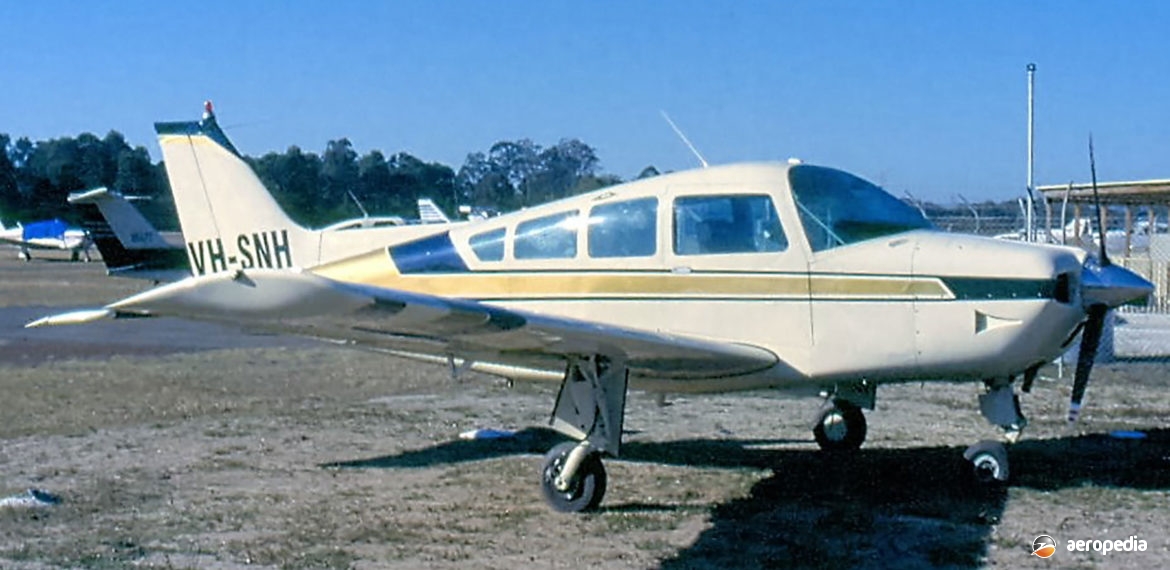Photograph:
Beech C-24R Sierra VH-SNH (c/n MC-528) at Hoxton Park, NSW in July 2005 (David C Eyre)
Country of origin:
United States of America
Description:
Four/six-seat cabin monoplane
Power Plant:
One 149 kw (200 hp) Lycoming IO-360-A1B6 four-cylinder horizontally-opposed air-cooled engine
Specifications:
- Wingspan: 9.98 m (32 ft 9 in)
- Length: 7.65 m (25 ft 1 in)
- Height: 2.51 m (8 ft 3 in)
- Wing area: 13.57 m² (146 sq ft)
- Max speed at sea level: 274 km/h (170 mph)
- Cruising speed at 75% power at 2,135 m (7,000 ft): 261 km/h (162 mph)
- Economical cruising speed at 55% power at 3,050 m (10,000 ft): 224 km/h (140 mph)
- Initial rate of climb: 276 m/min (910 ft/min)
- Service ceiling: 4,570 m (15,000 ft)
- Range at economical cruising speed: 1,416 km (880 miles)
- Empty weight: 737 kg (1,625 lb)
- Useful load: 479 kg (1,057 lb)
- Loaded weight: 1,247 kg (2,750 lb)
History:
The prototype of the Beechcraft 23 series was flown for the first time on 23 October 1961 and, following certification, deliveries of production machines began during the following year. Eventually, to meet customer demand, a number of variants were produced, including, in 1970, a series with a retractable undercarriage. The first of this latter series was the Super R, which had an electrically-actuated hydraulic system for landing-gear retraction. It also had four windows as standard on each side of the cabin, a re-designed fuselage, and re-shaped windshield permitting more room in the cabin and, with the extra power, being able to carry up to six persons.
The series was developed during its production lifetime, a new model appearing in 1974 with a new cowling, a quieter engine, and a more efficient propeller.
In 1971 the name ‘Musketeer’ was dropped from the series and the retractable undercarriage variant became the Sierra 200. Some design changes took place in 1974 involving a new engine cowling, a quieter model of the engine, and a more efficient propeller. At that time designations were changed to indicate the power of the engine, the Sierra becoming the Sierra 200, and some aerodynamic changes were made to the series in 1977. Production continued in this form until suspended in 1984 due to the decline in the sale of light aircraft throughout the world, and problems in the USA with manufacturer’s insurance.
One Model B24R has been registered in New Zealand and ten Sierras have been registered in Australia.
Beech designed the Sierra with a high aspect ratio wing, this model having a thicker wing with a stronger main spar, a larger baggage door on the port side replacing a smaller door to permit access to the luggage space. This area was capable of carrying up to 122 kg (270 lb). Power plant was the Lycoming IO-360-A1B6 fuel-injected unit providing 149 kw (200 hp). A total of 793 Super Rs and Sierras was completed.

